Ancient Village Of Monsanto, Miraculously Balanced Giant Boulders And Knights Templar Connection
A. Sutherland - AncientPages.com - Monsanto is a very ancient and remote village made of stone. Here, most of the homes are built into the rocks! The whole place is truly astonishing.
Monsanto Village. Credit: Adobe Stock - LaureanoJesus
Monsanto is located southeast of Serra da Estrela, the highest mountain range in mainland Portugal, and the region has a rich history. People lived there in the Paleolithic Era. Archaeologists have found evidence of Roman, Visigoth, and Arabian occupations.
A Lusitanian fortress in the area was conquered and improved by the Roman Army, then occupied by the Visigoths, the Alans, and others during the 8th century.
Finally, the place was conquered by the Christian Army of the first king of Portugal, Afonso Henriques, also known as Afonso the Conqueror.
The Lusitanian fortress was entrusted to Gualdim Païs, Master of the Templar Order in Portugal, who rebuilt it to protect the new kingdom's southern border. He finished the works in 1171, that is to say, two years after building the fortress of Tomar.
Tomar was originally a 12th-century Templar stronghold, but when the order was dissolved in the 14th century, the Portuguese branch was turned into the Knights of the Order of Christ.

Left: 19th-century depiction of King Afonso I Henriques of Portugal, on the ceiling of the Kings' Room, Quinta da Regaleira, Sintra, Portugal. Image credit: via Wikipedia; Right: Dom Gualdim Pais (1118 – 13 October 1195), a Portuguese crusader, Knight Templar. Image credit: Jornal de Sintra
King Afonso Henriques conquered Monsanto from the Moors, and in 1165, the city was given military orders to maintain the reconquered city with Christian hands.
King Alfonso granted it to the Templar monks who had the Castle built under the orders of Gualdim Pais, Grand Master of the Order of Knights Templar.
King Sancho I (1190) and King Afonso III (1217) confirmed the Charter. King Sancho I of Portugal reconstructed and repopulated the fortress because it was severely damaged during the wars with the king of Leonese, an independent kingdom founded in AD 910 and situated in the northwest region of the Iberian Peninsula.
In 1308, King Dinis granted it a Charter, which allowed a fair to take place near the Chapel of São Pedro de Vir-a-Corça. King Manuel I granted it a New Charter in 1510, giving it the right to be a 'town.'
However, Monsanto and its inhabitants could not contemplate a quiet life.
In the middle of the 17th century, Luis de Haro, Minister for Filipe IV, tried to siege Monsanto, but his attempts were unsuccessful.
Later, at the beginning of the 18th century, the Duke of Berwick also laid siege to Monsanto. Still, the Portuguese Army, commanded by the Marquis of Minas, defeated the invader on the slopes of the hill. In 1758, Monsanto was a municipality, having kept this privilege until 1853.
Unfortunately, the impressive medieval Castle of Monsanto was destroyed in the nineteenth century because of an accidental explosion in the ammunition depot of the Castle.
In 1938, Monsanto bestowed the "most Portuguese Village of Portugal." It might seem a little odd because most villages in Portugal don't have houses squeezed between gigantic boulders.
The ancient population carved dozens of narrow streets and passageways right through the center of the boulders. The passages lead the residents upwards and downwards over the rocks and through the village.
One can easily say that this unique village is frozen in time. Its appearance hasn't changed in centuries.
Written by – A. Sutherland - AncientPages.com Senior Staff Writer
Updated on December 13, 2022
Copyright © AncientPages.com All rights reserved. This material may not be published, broadcast, rewritten or redistributed in whole or part without the express written permission of AncientPages.com
Expand for referencesMore From Ancient Pages
-
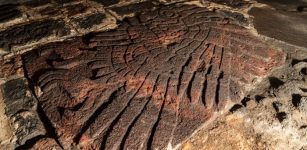 Huge Golden Eagle Relief Made By The Aztecs Discovered At Tenochtitlan
Archaeology | Feb 3, 2021
Huge Golden Eagle Relief Made By The Aztecs Discovered At Tenochtitlan
Archaeology | Feb 3, 2021 -
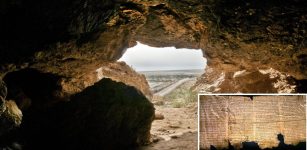 DNA Sheds New Light On The Mysterious Dead Sea Scrolls
Archaeology | Jun 2, 2020
DNA Sheds New Light On The Mysterious Dead Sea Scrolls
Archaeology | Jun 2, 2020 -
 Tomoe Gozen’s Bravery And Strength, Embodiment Of A True Female Samurai
Featured Stories | Oct 16, 2018
Tomoe Gozen’s Bravery And Strength, Embodiment Of A True Female Samurai
Featured Stories | Oct 16, 2018 -
 What Is The History Of Pancakes?
Ancient History Facts | Mar 7, 2024
What Is The History Of Pancakes?
Ancient History Facts | Mar 7, 2024 -
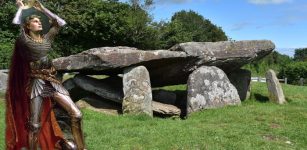 Excavation Of A Mysterious 5,000-Year-Old Tomb Linked To King Arthur Has Started
Archaeology | Jul 5, 2022
Excavation Of A Mysterious 5,000-Year-Old Tomb Linked To King Arthur Has Started
Archaeology | Jul 5, 2022 -
 Little People: Ancient Race That Pre-Dates The Celts, Anglo-Saxons And The Arrival Of Indians
Featured Stories | Nov 16, 2023
Little People: Ancient Race That Pre-Dates The Celts, Anglo-Saxons And The Arrival Of Indians
Featured Stories | Nov 16, 2023 -
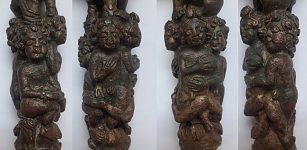 Roman Britain Executions Revealed – New Evidence
Archaeology | Aug 14, 2021
Roman Britain Executions Revealed – New Evidence
Archaeology | Aug 14, 2021 -
 Puzzling Connection Between Native Americans And Lost Northern European Race Could Re-Write History
Civilizations | Apr 14, 2018
Puzzling Connection Between Native Americans And Lost Northern European Race Could Re-Write History
Civilizations | Apr 14, 2018 -
 Ancient Monuments The World Is Not Allowed To See – Forbidden Zone – Part 2
Featured Stories | Aug 27, 2020
Ancient Monuments The World Is Not Allowed To See – Forbidden Zone – Part 2
Featured Stories | Aug 27, 2020 -
 Pictograms: First Written Accounts Of Earthquakes In Pre-Hispanic Mexico
Archaeology | Aug 27, 2021
Pictograms: First Written Accounts Of Earthquakes In Pre-Hispanic Mexico
Archaeology | Aug 27, 2021 -
 Sacred Mount Meru: Home Of The Gods And Center Of The Universe
Featured Stories | Feb 7, 2019
Sacred Mount Meru: Home Of The Gods And Center Of The Universe
Featured Stories | Feb 7, 2019 -
 The Perplexing Story Of The Seven Continents And The Seven Mysterious Races – Can The Past Foretell The Future? – Part 2
Featured Stories | May 15, 2022
The Perplexing Story Of The Seven Continents And The Seven Mysterious Races – Can The Past Foretell The Future? – Part 2
Featured Stories | May 15, 2022 -
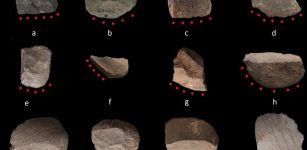 Earliest Evidence Of Rice Harvesting Provided By China’s Ancient Stone Tools
Archaeology | Dec 8, 2022
Earliest Evidence Of Rice Harvesting Provided By China’s Ancient Stone Tools
Archaeology | Dec 8, 2022 -
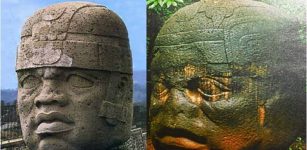 The Olmecs – Who They Were, Where They Came From Still Remains A Mystery
Civilizations | Feb 19, 2015
The Olmecs – Who They Were, Where They Came From Still Remains A Mystery
Civilizations | Feb 19, 2015 -
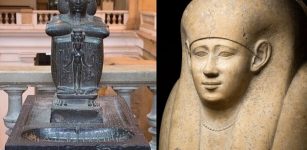 Ancient Secrets Of The Black Basalt Statue Of Priest Djedhor Revealed
Artifacts | Feb 26, 2021
Ancient Secrets Of The Black Basalt Statue Of Priest Djedhor Revealed
Artifacts | Feb 26, 2021 -
 On This Day In History: Battle Of Vincennes, Indiana – On Feb 24-25, 1779
News | Feb 24, 2017
On This Day In History: Battle Of Vincennes, Indiana – On Feb 24-25, 1779
News | Feb 24, 2017 -
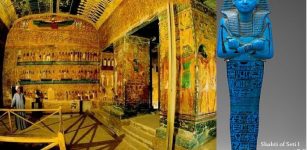 Ushabti: Servants Who Worked For Their Owners In Afterlife In Ancient Egyptian Beliefs
Ancient History Facts | Feb 12, 2020
Ushabti: Servants Who Worked For Their Owners In Afterlife In Ancient Egyptian Beliefs
Ancient History Facts | Feb 12, 2020 -
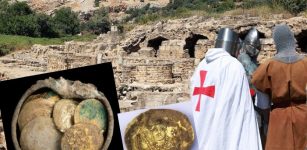 Treasure Hoard Of Rare Gold Coins From The Crusader Conquest Discovered In Caesarea, Israel
Archaeology | Dec 8, 2020
Treasure Hoard Of Rare Gold Coins From The Crusader Conquest Discovered In Caesarea, Israel
Archaeology | Dec 8, 2020 -
 Evidence Of Unknown Ice Age Civilization Discovered In Michigan Ignored By Pipeline Company!
Archaeology | Oct 16, 2020
Evidence Of Unknown Ice Age Civilization Discovered In Michigan Ignored By Pipeline Company!
Archaeology | Oct 16, 2020 -
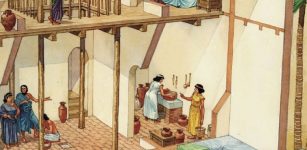 What Did Houses For Ordinary People In Sumer Look Like?
Ancient History Facts | Jul 30, 2017
What Did Houses For Ordinary People In Sumer Look Like?
Ancient History Facts | Jul 30, 2017

